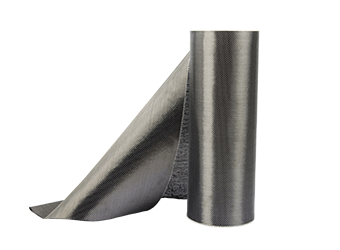Solutions
Horse Construction offers full range of structural strengthening materials with technical supports, documentation supports, products supports, project supports.
Application of Continuous Damage Mechanics in Carbon Fiber Reinforced Concrete Beam
Application of continuous damage theory in structural reinforcement
The concrete structure is damaged by various factors during use. Due to different factors such as load history and working environment, traditional mechanical analysis methods often have limitations when applying reinforced concrete structures.
Taking concrete stress damage as an example, when determining a certain point of damage, once the crack tip is damaged. There will be stress relaxation, the stress field at the crack tip will change, the stress field at the original crack tip position will no longer be determined, and the material in the damaged area tends to be nonlinear. At this time, there will be two situations: one is that the crack continues to crack along the new damage zone, and the other is that the relaxation of stress makes the point enter a state of equilibrium.
Therefore, the development of material damage is closely related to the stress field, and the value will also change when the material properties of the component change or the stress field changes due to the effect of the macroscopic strengthening material.
In traditional reinforcement calculations, the reinforcement materials are often replaced with equal strength or are biased towards safety. Instead of considering the force of the original structure, only the contribution of the reinforcement material to the bearing capacity is calculated. This is related to the microscopic force state of the structure. In and out. The concrete damage model established on the material level can truly reflect the damage model of the actual structure or component. Replacing the damage-free constitutive model with a damage-containing constitutive model can not only dynamically track the strength degradation of concrete due to damage and quantify the degree of damage of the concrete structure, but also find a suitable reinforcement method through the establishment of a concrete damage model And to evaluate the repair situation and mechanical performance indicators of the structural damage after actual reinforcement. However, when the damage theory is used to evaluate concrete structures, the calculations are often complicated, and practical engineering applications will have certain limitations.
Carbon fiber reinforcement
For carbon fiber reinforced reinforced concrete structures, the current equal strength method is often used for calculation, ignoring the influence of the initial damage of the structure and the actual stress state on the overall performance of the reinforced member. Some scholars have also conducted research on this issue, and the results show that the initial damage has a significant effect on the reinforced concrete beam after reinforcement.
From a macro point of view, carbon fiber shares part of the tensile stress through reinforcing steel bars, thereby achieving the purpose of reinforcing reinforced concrete structures. From a microscopic point of view, carbon fiber can improve the stress environment, absorb a considerable part of the energy dissipated by the development of internal concrete cracks when the structure is stressed again, and obviously prevent or delay the initiation and development of internal microcracks. Macroscopically, carbon fiber has a good restraint effect on the development of concrete cracks, so its impact on concrete damage is greater than that of steel bars. In addition, due to the good physical and chemical properties of carbon fiber itself, it becomes a good elastic material that is not easily damaged.
Through the analysis of the irreversible damage inside the concrete, the microscopic damage can be better connected with the macroscopic damage. The whole process of damage development of concrete structures is dynamically analyzed, and the service life of the structure can be further predicted according to the damage of the structure. Especially for the carbon fiber reinforced concrete structure, a composite structure composed of multiple materials, the damage mechanics method can better reflect its mechanical properties.
You can find anything here you are in need of, have a trust trying on these products, you will find the big difference after that.

High strength, unidirectional carbon fiber wrap pre-saturated to form a carbon fiber reinforced polymer (CFRP) wrap used to strengthen structural concrete elements.

High strength, unidirectional carbon fiber fabric pre-saturated to form a carbon fiber reinforced polymer (CFRP) fabric used to strengthen structural concrete elements.

High strength, unidirectional carbon fiber sheet pre-saturated to form a carbon fiber reinforced polymer (CFRP) sheet used to strengthen structural concrete elements.